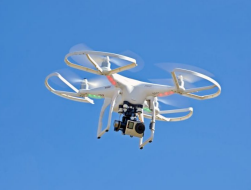For the electronic discovery and computer forensics data junkies out there, the amount of data drones store can make your head spin like a dreidel. The main data found consistently among various drones is photo imagery and geolocation data. Given how nascent the market is presently, we would anticipate communications platforms may be embedded in certain drone systems in the future. Many of the drone providers have Standard Development Kits (SDKs) available for application development. Therefore, the data available today may be very different than what exists in the future. The drones may have sensors based on varying technologies including LIDAR, Optical, NVIR, thermal and WiFi. These sensors tell us in discovery where the drone has been. Based on the drone, there may be data logging enabled for potential evidence. Examples of drone companies include AeroVironment, DJI, General Atomics, Northrop Grumman, Prox Dynamics AS, SAIC and The Boeing Company. The drones typically sync data to a central computer as local storage can reach capacity as a result of the storage size of the photos. Data may also be held on an SD card. Most drones operate on a Linux operating system. The computers used to communicate with the drones and sync data may be Windows, Linux or OS X-based operating systems. A smartphone or tablet may also contain applications relating to the drone, so an iOS or Android operating systems may be relevant in data extraction from these smart devices. More periphery devices such as the battery or radio controller may contain vendor-specific digital evidence. We anticipate many future technological innovations in data transmission, battery power, storage and data security as the drone market matures. For the actual photo imagery, EXIF data may be located. This EXIF data is the same as what you’d find on photos taken from a camera or any device and may include such metadata as the Make, Model, Software, Date Time, Shutter Speed, Exposure Time and other detailed metadata on the Image and Camera used. This article scratches the surface of data found on drones. It is best to seek the expertise of companies such as Digital Mountain on this highly interesting and developing segment of the Internet of Things (IoT). In past e-newsletters, we’ve covered such topics as smart devices, Wearables and vehicle infotainment systems. We realize drones may be a bit more distant on the interconnected device spectrum. However, it is important to realize the explosion of data tracking occurring in our environment and drones can play an important element of the puzzle depending on the case. Perhaps drones will deliver dreidels to our doorstep for Chanukah in the near future?
